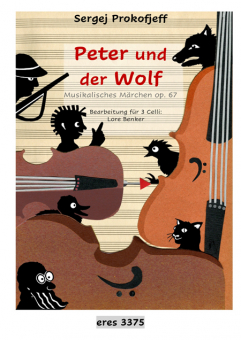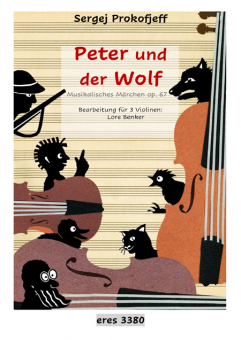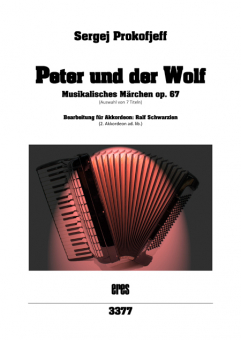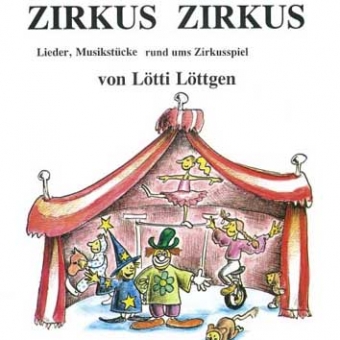Search for Authors Aavik, Juhan ABBA Abel, Clamor Heinrich Abt, Franz Adams, Lee & Strouse, Charles Afanasieff, Walter Ahle, Johann Rudolf Ahlert, Daniel Ahlert, Fred E. Alarcón, J.M. & Posada-Charrúa, J. Albeniz, Isaac Albert, Morris Albinoni, Tomaso Giovanni Alfvén, Hugo Allen, Robert Althouse, Jay Amandi, Elisabeth Anton, Gus Anton, Gus / Flammen, Peter Arenski, Anton Stepanowitsch Arkin, Eddie Arlen, Harold Arnie, Ralf Arro, Edgar Atilano, Carlos Babenia, Shearmann, Greenaway Bach, Johann Seb. Bacharach, Burt Backer/Davis/Cook/Greenway Baier, Frank & Müller, Jens Peter Ballard, Pat Balzer, H, Leopold Banzhaf, Helmut Barkauskas, Vytautas Bartel, Roselinde & Reinhard Barthel, Ursula Bartulis, Vidmantas Bastian H.G. & Fischer W. Bastian, Hans-Günther Bauer, Siegfried Becht, Erich Becker, Otto Becker-Foss, Jürgen Beethoven, Ludwig van Bein, Wilhelm Beines, Gerd Belafonte, Harry & Freedman, Robert Bellman, Carl Michael Bendel, Franz Bender, Erich Benker, Lore Berger, Wilhelm Bergmann, Richard Berlin, Irving Bernstein, Leonard Best, Horst Biebl, Franz Bikkembergs, Kurt Bilias, Günter Billingsley, Alan Binge, Ronald Biste, Paul Bittner, Johannes Bizet, Georges Blum, Klaus Bochold, Heinz Böckmann, Alfred Bogenhardt, Helmut Böhme, Walther Bohn, Rudi Boje, Karl Borodin, Alexander Porfirjewitsch Bortniansky, Dimitri Botho, Lucas Bradford, Sylvester & Lewis, Al Brahms, Johannes Brandes, Hansjürgen Brauch, Rigobert Braun, C. Breitenbach, Christoph Brettner, Peter Breuer, Franz Josef Brockschmidt, Michael Brosch / Molderings Brosch, Uwe Brown, Nacio, Hebb Bruch, Max Bruckner, Anton Brueck, Ulrich Brüngel, Klaus Brunke, R. & Motog, J. Bruns, Carl Brust, Herbert Bryant & Bryant Bryars, Gavin Brymer, Mark Buchner, Gerhard Bucka, Klaus Buckman, Eva & Mokoena, Thabang Buhé, Klaus Bulling, Burchard Buring, Hans Bürthel, Jacob Butt, Ursula Cadow, Paul Cadzow,D. & Brown M.W. Cahn & Styne Calhoun, Charles Carlton, Vanessa Carmichael / Gorrell Carter, Thomas Casey & Jacobs Cassens, Karlheinz Chapman, Steven Curtis Charpentier, Marc Antoine Chopin, Frederik Ciurlionis, Mikalojus Konstantinas Clasen, Hans-Werner Coenen, Paul Collins, Phil Collmann-Witheridge, Gina Conde, Antonio Corelli, Arcangelo Croce, Jim Crocker, Emily Cross, C. Cui, César Cunis, Clemens Czermak, Wilma Dadiani, Juri Dantonello, Jos. Darin, Bobby Davenport/Cooley de marzi, Bepi de Witt, Günter Decker-Voigt, H.-H. Decker-Voigt, H.-H. & Escher, Josef Decker-Voigt, H.-H. & Traber, O, M, Dehne, Paul Dehning, Karsten Déodat de Séverac, J.M.A. di Lasso, Orlando Diamond, Steve & Hamm, Regie Dieckelmann, Heinrich Dietl, Michaela Dippon, Werner Dobra, Hans-Joachim Dojcinovic, Uros Dorendorf, Carl Dörflinger, Kurt Dörner, Hans Dörr, Jens Dörr, Ulrich Dorsch, Nikolaus Dowland, John Duddy, Lynn & Pockriss, Lee Dürrner, Johannes Dvorak, Antonin Eben, Petr Eccard, Johann Ecker, Carl Eckert, Alex Edlund, Lars Eespere, René Ehlers, Erich Elgar, Edvard Eller, Heino Ellerkamp, K. H. Ellington, Duke Emerson, Roger Emig, Hartmut Encina, Juan del Engel, Walther Engelhart, Gerold Erdlen, Hermann Eres Kataloge Ernjessakssa, Grigorij Escher, Peter Espitalier, Georg Etti, Karl Evers, Hermann Evers, J. Faisst, Immanuel Farrow, Larry Fauré, Gabriel Fibich, Zdenko Finkel, Klaus Fischbach, Klaus Fischer, Christiane Fischer, Claus-Jürgen Fischer, Ernst Fischer, Gotthilf Fischer, Theo Fischer, Wilfried Flammen, Peter Flathe, M, & Wendebourg, E. Flesner, Hannes Fletcher, J & Kyle, Frances Frank, Bernd Frederichs, Henning Freundt, Cornelius Frey, Oskar Frey-Völlen, Adolf Friderici, Daniel Friedenreich, Gregor Friedrichs, Gustav Frishberg, Dave Fritsche, Volkmar Frohne-H., I. & Maack, M. M. Frohne-Hagemann, Isabelle Frohs, Rudolf Frommlet, Dieter Fuhrig, Wolfgang Fürstenau, A. Bernh. Gade, Niels Gai / Steward / Green Gailand / Steward / Green Gaillard, Slim Galka, C. & Mischok-Schenk, I. Galka, Christine Gardner, Maurice Garshnek, Igor Gaß-Tutt, Anneliese Gast, Lothar Gastoldi, Giovanni Gatter, F. Thomas Gehrhardt, S. Gehring, Bernd Geilsdorf, Paul Genzmer, Harald Gerhardt, Paul Gerlach, Günter Gerlitz, Carsten Gershwin, George Gertz, Thomas & Wiebers, Heike GEWA Gewande, Wolf-Dieter Giebeler, Konrad Gies, Oliver & Gröger, Bertrand Gietz, Hans-Bernd Gietz, Heinz Gilman, Leonid Gippenbusch, Jakob Glinka, Michail Gluck, Christoph Willibald Goebel, Benedict Goldmark, Karl Goldring, M. & Sund, R. Goldring, Malcolm Gordon / Warren Görsch, Ursula Gotovac, Jakov Gottschick, Friedemann Gowing, Chris Granados, Enrique Graun, Carl Heinrich Grave, Johann Hieronymus Grebe-Becker, Jutta Green / Brown / Homer Grell, August Gribincika, Marina Grieg, Edvard Grimm, Julius O. Grisoleit, Karel Gröger, Bertand Groll, Otto Grooss, Karl Grube, Fritz Grunwald, Herbert Gumpelshaimer, Adam Gundermann, Karsten Gushman, Pete Gwinner, Volker Haas, Joseph Haas, Peter Michael Haffner, Walther Hairston, Jester Hakim, Naji Hamlish & Kleban Hammerschmidt, Andreas Hammond, Albert Hampel, Norbert Händel, G. Fr. Hansen, Ernst Härma, Miina Harrison, George Hart / Rodgers Hartmann, Karl Amadeus Hartmann, Karl Amadeus Hary, Friedel Hassler, Hans-Leo Haug, Lukas Hauptmann, Moritz Haus, Karl Haydn, Johann Michael Haydn, Joseph Hayes / Porter Hayes, Billy & Johnson, Jay Heeren, Hanns Hegar, Friedrich Hegel, Wilhelm Heidloff, Guido Heilbut, Peter Heinrichs, Wilhelm Heinsch, Wolfgang G.P. Heizmann, Klaus Hellberg, Bernt-Michael Helling, Hanna Hempel, Christoph Henschel, Arthur Henze, Hans-Werner Herlyn, Heinrich Herman, Jerry Hermann, Karl August Herrmann, Gottfried Herrmann, Jakob Herterich, Siegfried Herzog, Paul Hess, Reimund Hessenberg, Kurt Heupel, M. & Meyer, E. Heusen, Jimmy van Higbee, Alan J. Hilbert & Janosa Hilger, Manfred Hindemith, Paul Hiob, Johannes Hoetzel, Paul Hoffmann, Julien Hoffmann, Nicolaus Höfling, Werner Hofmann, Bernhard & Kalmer, Stefan Hofmeister, Johler, Schnirring Höft, Fritz Hogan, Moses Holland, Edward Holland, Edward & Dozier, Lamont & Holland, Brien Holliger, Heinz Holterdorf, Theodor Homilius, Gottfried August Hoppe, Bernhard Hörner, Fritz Horner, James Hornoff, Alfred Horstmann, Steffen Houston, Jamie Hovhaness, Alan Huff, Mac Hülsheger, Erich Hummel, Bertold Hummel, Hansjörg Hunger, Johannes Hupfeld, Herman Idle, Eric & Du Prez, John Iglesias, Enrique Ihlau, Fritz Ingegneri, M. A. Isaak, Heinrich Jackson / Richie Jackson, Michael Jäger, Harry Jäger, Karl-Heinz Janacek, Leo Janetzki, Michael Janosa, F. & Hilbert, J. Janosa, Felix Jaufenthaler, Gottfried Jehn, Nicolas Jensen, Adolf Jessel, Léon Jöde, Fritz Johannsen, Heinrich John, Elton Johow, Joachim Jonas, Urs Jones / Yalanis Jones / Yalanis / Lorimer Joplin, Scott Jordan, Hellmut Juht, Ludvig Jung, Theodor Juozapenaite-Eesmaa, Aleksandra Jürme, Juhan Kahal / Fain Kalejs, Aivars Kalsons, Romuald Kaluza, Günter Kander, John Kangro, Raimo Kanz, Joseph Kapp, Artur Kapp, Eugen Kapp, Villem Karasch, Kurt Karganoff, Génari Karindi, Alfred Kasha / Lloyd Kaufmann, Otto Kell, Ville-Markus Kelling, Hajo Kempkens, Arnold Kern, Carl August Kern, Jerome Kern, Matthias Kern, Matthias & Kern, Monika Kerr, Anita Ketterer, Ernst Kickstat, Paul Kiesche, H. / Züghart, M. Kieslich, Leo Killmayer, Wilhelm Kipp, Heinrich Kirchhoff, Alfred Kirscht, Godehard Kissling, Adolf Kist, Othmar Kiupel, Paul Kivihall, Pille Klefisch, Walter Klein, Bernhard Klein, Petra Kleinert, Andreas Kliebert, Karl Klohs, Lebrecht Knab, Armin Knigge, A. Frh. v. Knill, Paolo J. Knop, Lüder Knorr, Ernst-Lothar von Koch, Eberhard Koch, Helmut Kodama, Mari Koester, Werner Koha, Jaan Kohn, Bernd Kolodziej, Günter Kõrvits, Tõnu Kostowa-Giesecke, Wessela Kozlowski, Thomas Kracke, Hans Kraemer, Emil Krämer, Werner Krannig, Simon Kratz, Arnold Krause, Lucie-Marie Kreek, Cyrillus Kretzschmar, Günther Kreutzer, Conradin Krol, Bernhard Kromer, Carl Krüger, Christian Krugmann, Heike Krummel, Hans Kuhlo, J. und Glebe, K. Kuhn, Peter Kuhn, Thorsten Kuhnke / Miller / Schulze Kunileid, Aleksander Kunterbunt aus Grasberg Kuppelmayer, Alfred Kurpinski, Karol Kuulberg, Mati Laja, Peeter Lange, Gregor Langosz, Heribert Langstroff, Robert Lasso, Orlando di Lattik, Aare-Paul Latzke, Harry Laur, Risto Leavitt, John Lechner, Leonhard Leck, Henry & Ellis, Martin Ledbetter, Huddie Lefmann, Paul Lehner, Leo Lehr, Wolf Dietrich Leiber, Jerry / Stoller, Mike Leibold, Roland Lemmermann, Heinz Lenders, Hans Günter Lendvai, Erwin Lennon, J. / McCartney, P. Lennon, John Lenselink, Harold Lepik, Tarmo Lepnurm, Hugo Leslie, Andrew Lethmate, Wilhelm Liadow, Anatole Licht, Ernst Liesche, Richard Ligeti, György Limberg, Hans-Martin Limberg, Heribert Lincke, Paul Lindemann, Stefan Lindner, Wolfgang Linkenbach, Klaus Lissewski, Jürgen Lissmann, Kurt LLoyd-Webber, Andrew Lock, Gerhard Loewe, Carl Loewe, Frederick Loewe, Joh. Heinrich Löffler, Hellmut Lohmann, Heinz Lojeski, Ed Lorenzen, Julius Th. Löttgen, Lötti Lubrich, Fritz Lubrich, Fritz (sen.) Lüdders, Paul Lüderitz, Wolfgang Lüdig, Mihkel Ludwig, Franz Ludwig, Max Luhn, Jürgen Lukacs, Mirko Lully, Jean Baptiste Lunow, Albert Luther, Martin MacDermond, Galt Macht, Siegfried Mägi, Ester Man/Weil/Stoller/Leiber Mancini, Henry Mann, Barry & Weil, Cynthia Marguste, Anti Marks, Johnny Marnitz, Paul Martin, Allegra Marttinen,Tauno Maxwell-Davies, Peter Mayo, Lindsey, Lindsey Mayson, Edward J. McCartney / Laine McDonald, Richie & Harbin, Ronald & Pfrimmer, Don Medinja, Einar Meier, Manfred Melartin, Erkki Gustav Melles, Hermann Melrose, Walter & Oliver, Joseph "KING" Mendelssohn Bartholdy, Felix Menke, David Menken, Alan Menskes, Johann Menzel, Horst Merikanto, Oskar Mertens, Eddy Methfessel, Johann-G.-A. Metzner, Susanne Meyer, Fritz (Friedrich) Meyer-Hoffmann, H. G. Micheelsen, Hans Friedrich Michel, Johannes Matthias Michels, Raimund Mielenz, Hans Mießner, Otto Miller, Cristi Cary Mischok-Schenk, Isabella Miskinis, Vytautas Möckelmann, Klaus Mohr, Burkhard Moissejev, Marat Möller, Friedrich Wilhelm Möller-Rudolf, Th. und R. Molsen, Uli Moniuszko, Stanislaw Monteverdi, Claudio Moondog (Louis Hardin) Morali / Belolo / Willis Morley, Thomas Moroder & Forsey & Cara Moroder, Giorgio Mozart, Wolfgang A. Müller, Elise Müller, Jens-Peter Müller, Karl-Josef Müller, Klaus-Benedikt Müllich, Hermann Musser, S.B. Mussorgsky, Modest Mylius, W.G. Nadol, Helmut Nägeli, Hans Georg Nagler, Franciskus Nápravnik, Eduard Narbutaite, Onute Nashashibi, Ezzat Neitsch, Cornelius Nelhiebel, Klaus Neubert, Reinhold Neuhaus / Jackson Neumark, Georg Newman, Randy Nichols, Roger Nimtz, Horst Nix, Reinhold Noskowski, Zygmunt Nössler, Eduard Nothdorf, Edith Nöther, Willi Nowak, Erhard Offenbach, Jacques Oginski, M. K. Oja, Eduard Olias, Lotar Olpen, Friedrich W. Onnen, Gerd Ophoven, Hermann Ophoven, Hermann Öpik, Ernst Orff, Carl Ort, Franz Othmayr , Caspar Otten, Franz-Joseph Pachulski, Henryk Packeiser, F. & Rademaker, D. Palestrina, Giovanni Piergluigo da Pantschenko, Sergej Pappert, Robert Pappert-Picard, Richard Parker, Alice Pärt, Arvo Parten, Willy Paul, Marshall Paulsen, Heinrich Paulsen-Bahnsen, Ralph Peña, Belisario Penderecki, K. Perepelita, C.V. Peter, Martin Peters, Ernst Petrov, Valery Peuerl, Paul Phillips, John PICKBOY Pietsch, Ulrich Pigarelli, Luigi Playford, John Pohle, Rolf Pohlmeier, Ralf Põldmäe, Alo Poos, Heinrich Popescu, Rucsandra Porter, Cole Posada-Charrúa, J. Poser, Hans Pracht, Robert Praetorius, Michael Preis, Paul Preiß, Thomas Preston / Fisher Prokhorov, Vadim Prokofjeff, Sergej Protzer, Siegfried Puderer, Theo Purcell, Henry Purifoy, John Pusch, Steffen PYRAMID Quinn, Freddy Raabe, Helmut-Wilhelm Rääts, Jaan Rabe, Emil Rachmaninoff, Sergei Wassiljewitsch Radermacher, Friedrich Raid, Kaljo Ramrath, Konrad Rannap, Rein Rath, Siegfried Rathjens, Fritz Rau, Walter Rauch, Andreas Rautavaara, Einojohani Rautenstein, Julius Ernst Ravel, Maurice Raymond, Fred Rebikov, Wladimir Iwanowitsch Reckmann, Hiltraud Redding, Otis Reger, Max Regnart, Jakob Rehfeld, Kurt Rehfeldt, Mathias Reichardt, Joh, Friedrich Rein, Walter Reinecke, Arthur Reinecke, Karl Reinthaler, Carl-Martin Remesa, Alvidas Remke, Martin Renard, Alfons Renken, Hans-Dieter Renzi, Alexander Th. Reuter, Georg Rhein, Eddy Riccius, Aug. Ferd. Richie, Lionel Richter, Willibald Riedel, Peter Rimski-Korsakow, Nikolai Rische, Quirin Rist, Georg Robra, Frank Röder / Weichert Röder, Helmfried Rodgers, M. Rodgers, Richard Rodriguez, Matos Gerardo Hernan Rohdmann, Dorothea Röhrs, Reinhard Rohwer, Jens Rölke-Jørgensen, Paul Romberg, Andreas Romberg, Bernhard Römer, Hansjörg Roos / Dixon Rose, Karl Heinrich Rosenberg, Joachim Rosenstengel, Albrecht Rossini, Gioacchino Rosteck, Oliver Rota, Nino Rothkegel, Klaus Rubach, Friedrich Rubin, Alexander Rubinstein, Anton G. Rubinstein, Artur Rungenhagen, Karl Friedrich Ruthenberg, Otto Saar, Mart Saebelmann, Friedrich August Saint-Saëns, Camille Salieri, Antonio Sarabin, Franz Sartore, Eberhard Sartorio, Arnoldo Sau, Olev Scarlatti, Alessandro Scarlatti, Domenico Schaefer, Wolfgang Schaefers, Anton Schallehn + Weber-Kellermann Schallehn, Hilger Schaper, Heinz-Chr. Scharfenberger, Werner Schattel, Betram Scheffler, John-Julia Scheider, Werner Scheidl, Otto Scheidtweiler, Steffen Schein, Johann Hermann Schenk, Fr. Scheyder, A. Ludwig Schiffers, Peter Schiffner, Wolfgang Schilling, Hans Ludwig Schilling, Otto-Erich Schlaud, Hans Schlenker, Manfred Schlüter, Ann-Helena Schmid Wilhelm F. Schmidt, Bodo Schmitz, Robby Schnebel, Dieter Schneider, B. Schneider, Enjott Schneider, W. Alexander Schneider, Walther Schnitzler, Heinrich Schnur / Thibaut Schnur, Peter Schoenebeck, Mechthild von Schönberg, Claude-Michel Schroeder, Hermann Schubert, Franz Schubert, Heino Schubert, Richard A. Schultz-Etzold, Oliver Schultze, Norbert Schulze, Otto Friedrich Schumann, Robert Schura, Sibylle Schütz, Dirk Schwartz, Jean Schwartz, Stephen Schwarzien, Ralf Schweda, Gerhard Sedaka/Greenfield Seeger, Pete Seeger, Peter Seggermann, Günter Seibt, Sophie Seiffert, Karl Selle, Rainer Sellentin, Horst Sendt, Willy Senfl, Ludwig Shaw, Kirby Shchedrin, Rodion Sherman & Sherman Sherman, Richard M. Sherwin, Manning Sievritts, Manfred Siimer, Mart Siitan, Toomas Silcher, Friedrich Simon, Ernst Simon, Hermann Simon, Paul Singer / Medora / With Singer Pur Sink, Kuldar Sisask, Urmas Slater, James Smetana, Friedrich Smith, Michael W. & Smith, Deborah D. Snow, Tom Sommer, Johann Sons, Walter Sorg, Gerd Spann, Roman Spies, Fritz Spohr, Louis Sprenger, Sebastian Stahmer, Klaus Stamm, Oswalt Steffen, Wolfgang Steffen, Wulf-Henning Steinbecker, Hubert Steinfeld, Karl-Heinz Sternberg, Hans Stevens, Cat Stiehl, Carl Stolz, Hellmuth Stolz, Robert Straus, Oscar Strauß-König, Richard Strauss, Johann Stürmer, Bruno Suchova, Lilia Süda, Peeter Sudholz, Georg Suitner, Peter Sulyok, Tamás Sweelink, Jan Pieterszoon Sweschnikow, Alexander Syrè, Wolfram Tamberg, Eino Tamulionis, Jonas Tellep, Leo M. Theuerkauf, Lutz Thibaut, Pasquale Thomas, Rob & Shur, Itaal Thompson/Mandel/Piermont Tobias, Rudolf Töpel, Michael Topman, August Torkel, Wilhelm A. Tormis, Veljo Traditional Trapp, Willy Trass, Toomas Tripp, Hartmut Tropf, Wolfgang Trust, Heinz-Ewald Tschache, Helmut Tschaikowsky, Peter I. Tschich, Hans Tulev, Toivo Turkat, Michael Türnpu, Konstantin Tüür, Erkki-Sven Uibo, Andres Vähi, Peeter Vahisalu, Andres various authors Värk, Veljo Vasks, Peteris Vedro, Adolf Veit, Wenzel Heinrich Velten, Helmut Verhiel, Ton Verhoog, Christiaan Vittoria, Tomas Ludovico Vivaldi, Antonio Voigt, Otto Völker, Toni von Herzogenberg, Heinrich Vorel, Waltraud Voß, Hans Dieter W.F. Schmid Wagenmann, Henric Wagner, Alfred Wagner, Richard Wagner-Schönkirch, Hans Walter, Ignaz Wangenheim, Volker Wangnet, Paul Warren, Mervyn & Emerson, Rodger Warskulat, Wilhelm Weber, Bernhard Weber, Carl Maria von Weber, Rudolf Weber-Müllenbach, K.H. Wege, Paul Wegner, Jörg A. Weichert, Manfred Weisert, Robert Weismann, Wilhelm Weiss / Baum Weiss, Gustav Weiss, Johann Sigismund Weiss-Steinberg, Hans Welker, Gotthard Wellmann, Dieter Welter, Friedrich Wendel, Ernst Werpup, Peter Werth, Rupprecht Wetz, Richard Wichmann, Horst Widdern, Tilman C. von Widmann, Erasmus Wienczny, Peter Wieniawski, Hendryk Wildhorn, Frank Wilhelm, Gerhard Williams, Hank Williams, John Wilson, Brian & Love, Mike Wiltberger, Hans Wise Guys Wittner Wohlgemuth, Gustav Woitschach, Carl Wojciechowski, Hermann Wolf, Konrad Wonder, Stevie Wormsbächer, Hellmut Wünsch, Oswald Yeston, Maury Zander, Adolf Zelter, Carl Friedrich Zieris, Axel Zimmer, Friedrich Zipp, Friedrich Zoll, Paul Zollmann, Juliane Zöllner, Carl Friedrich Zoltán, Ernõ Züghart, Manfred Zumstrull, Jörg
 +49 4298 1676
+49 4298 1676
 Deutsch
Deutsch
 English
English



